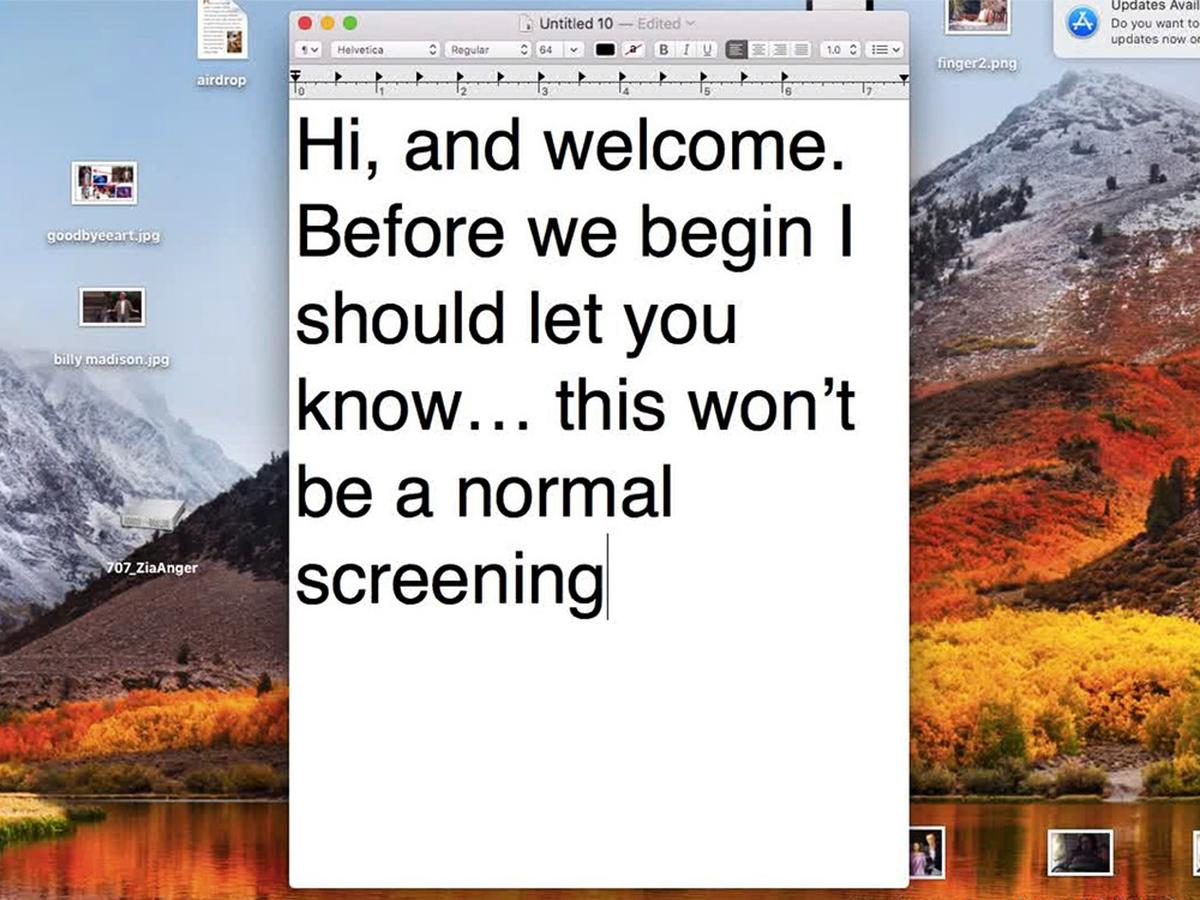Interview with Jia Rage: On ‘My First Film’, Working with Autofiction and Odessa Young
Zia Rag is not one to abandon a project, no matter how doomed it may seem. take it Always by all means, Anne MarieHis first feature film, starring a young Angel Olsen, was rejected at nearly every film festival to which it was submitted. For most filmmakers, this kind of rejection would likely signal the end of the road. But for Rage, it was the start of a decade-long excavation of his failures — and the creation of something entirely new.

MUBI’s latest offering My first filmRage ignited the flame of a live performance that transformed his failure into art from fading embers Always by all means. Originally staged at the Spectacle Theater in Brooklyn, the performance was as revealing as it was unconventional. Using TextEdit to type his thoughts in real-time, Anger recounts his journey through rejected projects, expressing his concerns about filmmaking, its pitfalls, and the messy connection between life and art. The performance toured North America and eventually made its way online during the pandemic, becoming cinematic catharsis for Anger and his audience alike.

Now, Rage has taken this raw material and molded it into a new project — a narrative film that builds on performance themes while playing with autofiction. My first film Star Odessa Young portrays herself as a thinly veiled version of Rage, mixing compositional imagery with moments of cinematic realism. The film explores not only his early work, but also his ideas about what it means to be successful as an artist. It is a deeply personal story of rebirth, revealing the artist’s uncanny ability to turn defeat into a creative act.
In our conversation, Rag opens up about the complexities of autofiction, the anxiety of building upward from failure, and how turning creative setbacks into performance art has reshaped his filmmaking process.
Excerpt:
Film and your live performances have been described as autofiction. How do you differentiate your life story adaptation from a traditional autobiography?
Zia: One of the main threads in My first film The search for truth, especially how truth tells its own story. I was really interested in moving towards something that felt true and honest to myself and my personal experience. As I went through different iterations of the film and acting, I realized that reality didn’t always feel as honest as I remembered. So, I aim to work towards a version of truth on my own terms. This meant abandoning traditional autobiography and filtering out other elements of my life – such as performance, mime and unconventional storytelling. Neither reality nor documentary felt like the right medium for what I felt inside.

Can you tell us how Odessa Young got involved in the film? Did the two of you develop a relationship where you became each other’s muses?
Zia: He is incredibly talented and unique in a world full of great young actors. He can fully reveal who he is for the camera – he’s like a shapeshifter. What really stood out to me was her ability to be “ugly” or dislikeable, which is what I wanted for the character. When I saw him inside Shirley By Josephine Decker, I knew she had a range that was both loathsome and likable at the same time.
I was lucky that he already knew my work and wanted to read the script and meet me. In our first meeting, we realized that we have a lot in common when it comes to filmmaking. We both wanted to create something exciting, full of passion and with people we love working with. There was even this funny moment where I noticed we were both sitting in the same sloppy, hunched posture. That physical match felt like a sign that she was the right choice.
He did a lot of work and preparation, asking me every question he had about the film and me. On the set, he was truly a dream.

A still in Odessa Young from ‘My First Film’ Photo credit: Mubi
Throughout the film, it seems like there were several attempts to hijack your creative vision. Do you think things have improved for aspiring female filmmakers in the last 15 years?
Zia: To be honest, making movies now is tougher than ever for all filmmakers. There is always a hierarchical system with the director and producer at the top. This can create complications over who controls what. For me, it was important not to ignore that hierarchy but to find other ways to put people in control of the creative process.
I’ve mostly worked on my own films recently, so I can’t speak for other sets. But I think there are always power dynamics in filmmaking. The key is to try and break down those hierarchies and create a more collaborative environment.

Do you think Hollywood has moved beyond narratives that only focus on the pain of being a woman?
Zia: probably not If it makes money, it will stick around. People are fascinated by pain and it is not limited to women. So, I suspect we’re beyond that. But I’m hopeful that we can move away from pain as the central focus, even though it’s a big part of the world.
You used filmmaking as a metaphor for pregnancy and birth. How true is the story about your idea involving a 35mm film canister?
Zia: As far as my father said it, it is 100% true. But if you’ve seen the scenes with my dad, you know he’s not too concerned with reality. So, who knows? It can be real, or it can be imaginary. At this point, I’m not sure it matters.

A still from ‘My First Film’ Photo credit: Mubi
One of my favorite lines from the film is from your dad when he says, “When did being nice ever stop you?” Do you still find the anxieties from your first filmmaking experience persistent in your new projects?
Zia: absolutely The thing I didn’t have 15 years ago was self-awareness. Being young and naive is great, but not at the expense of others. The biggest lesson I learned from my first film was to be constantly self-aware and present in the process.
Sometimes that means reflecting on what I did yesterday or 15 years ago. Time does not always move forward; It allows me to see things from different angles, jumping around. It’s part of my process now – being open to it, hating some version of myself, then learning to love them again.

You started with just four grand for ‘Always, All Ways’. When the budget for your first feature went up a bit, did it feel liberating, or did it make you think more about what could be ‘always, all the way’?
Zia: When you get money, you use it. I was unapologetically excited about having more resources. I never had the opportunity to pay people properly or work in a more controlled environment. I didn’t look back with regret; I focused on what we could do with the resources we had and how I could improve on my past work.
Do you think micro-budget filmmaking has reshaped the cinematic landscape?
Zia: Absolutely, but not always in a progressive way. Micro-budget films have allowed for new stories and voices, but many still follow traditional cinematic conventions—heroes with an arc, a neat ending. So, in some ways, it’s a repackaging of the same tradition. But it’s always exciting when people who don’t normally get the chance to make films can do so and bring a fresh perspective. Cinema is still young – less than 150 years old – so hopefully, we can move beyond these rules before AI takes over.

Okay, two quick questions. First, Jeremy Strong’s Kendall Roy features heavily on your X feed. Did Kendall’s constant struggle for success, only to be stripped of it on a winning streak, resonate with you?
Zia: absolutely I think Jeremy Strong is one of the best actors out there today. Characters like Kendall Roy, Tony Soprano and Michaela Coyle I May Destroy You — I thought they fell into the same really hateful category of people you can’t love. They are incredible, and Kendall’s story definitely struck a chord with me.
And given the state of contemporary America, do you think it’s easier for women to have an abortion or make their first film?
Zia: oh god Probably not. It’s 15 years ago for both now, which is really unfortunate.
My first film is currently available to stream on MUBI
has been published – Sep 09, 2024 05:17 pm IST



